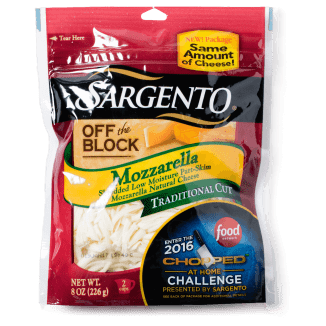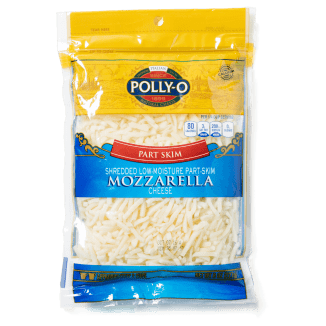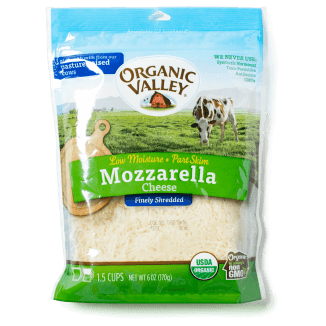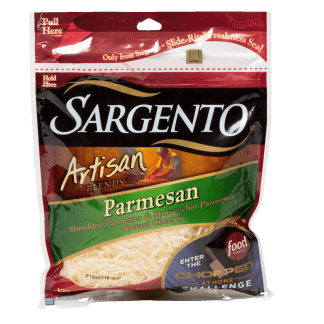It’s a tempting shortcut: Spend a few more dollars for a bag of shredded cheese and save time—and potentially skinned knuckles—by not having to grate the cheese yourself. We usually prefer to buy block mozzarella because it’s so versatile. We can slice it for snacking or sandwiches and shred it as needed when we make pizza, pasta bakes, and such. For nights when we’re in a hurry, we wondered which of the many options at the supermarket was the best shredded option.
To find out, we put together a lineup of nationally available shredded mozzarellas, including both whole-milk and part-skim options. Panels of America’s Test Kitchen staffers tried them plain and melted on pizza. We also sent the cheeses to an independent lab to get a read on their fat and sodium contents.
Texture was the most glaring problem for most of the cheeses. None were great when eaten raw—the anticaking agents made their strands gritty and powdery, and there was no fooling tasters into thinking this was freshly shredded mozzarella. But while tasters said “No, grazie” to the idea of eating these cheeses for a snack or atop a salad, most agreed that texture wasn’t as much of an issue when the cheese was melted on pizza. Though many of the cheeses were still unacceptably rubbery and stiff when melted, a handful emerged from the oven perfectly stretchy and chewy.
Why were some cheeses better than others when melted? The nutritional labels didn’t reveal any differences in the amounts of cellulose powder or starch coating the products. Instead, lab tests pointed to fat as an important variable the culprit. Our top-ranked cheese was made with whole milk, and tasters noticed that it was pleasantly “rich.” It contained 45 percent fat in its dry solids (a measurement of how much of the cheese is fat once water is removed), the highest levels of the group.
Our preferences generally reflected the amount of fat contained by each product, with products higher in fat typically outranking products with lower fat content. Fat helps cheese retain a tender, milky texture when melted, which explains why some of these leaner products turned dense and rubbery while fattier cheeses were more tender and stretchy. At 36 percent in their dry solids, the two lowest-ranked cheeses had the lowest fat levels.
Fat also contributes to flavor, so it was no surprise that lower-fat cheeses were seriously lacking in the buttery, rich flavor we expect from mozzarella. It didn’t help that some of these products were also under- or oversalted; we found the sweet spot for seasoning to be between 210 and 230 milligrams of sodium per serving—just enough salt to add a savory complexity that tasters craved. One other factor that contributed to flavor: The whole-milk cheese was the only one that contained vinegar, and our tasters appreciated the tang it added.
Tasters also noticed that a few very finely shredded cheeses were clumpy and sticky, easily balling up into dense globs that left the cheese splotchy and unevenly melted on pizza. When we measured individual strands with calipers, our favorite shreds were two or even three times thicker than lower-ranked products—about 2.8 millimeters compared to as thin as 0.9 millimeters. Large, chunky strands were easy to sprinkle over the pizza, didn’t clump in our hands, and melted in uniformly browned sheets.
Although we liked several of the shredded mozzarellas we tried, three earned a Recommend rating. Our winner, Polly-O Whole Milk Shredded Low-Moisture Mozzarella Cheese, contained the most fat and a moderate amount of salt and had the thickest, chunkiest strands. Its superior flavor and higher fat level can be attributed to the fact that it’s the only cheese in our lineup made using whole milk and vinegar, just like our favorite block mozzarellas.
Polly-O also makes our winning block-style mozzarella, and while it was clear from the lab results that the pre-shredded product is a different cheese from the block mozzarella, we decided to try them side-by-side. The block mozzarella was clearly superior when tasted plain, but you’re much more likely to use shredded mozzarella for cooking than for snacking. Happily, the two cheeses were pretty close when melted.
After this story was published, our winner from Polly-O was discontinued. Recently, the company has launched a reformulated version. Until we’re able to evaluate it, we’ve promoted our runner-up from Sargento. It’s part-skim and is not made with vinegar, but it’s flavorful (thanks to a generous amount of sodium) and has big, substantial shreds that melted evenly. If you’re tossing mozzarella into baked pasta or on top of pizza and want a fast, convenient option, our new winner from Sargento will do the trick.
- Taste plain
- Taste melted on Sheet Pan Pizza
- Send product to an independent lab to obtain measurements of sodium and of fat in dry solids
- Measure shred size with calipers
- Made from whole milk
- Moderate amount of salt, around 210 milligrams per 30-gram serving
- 45 percent fat in the dry solids
- Contains vinegar for a pleasant tang
- Thick, chunky strands that spread easily on pizza












